by CONNIE TABBERT
Editor
PEMBROKE — For any community that has a community newspaper, the best way to ensure it remains is to support it with advertising.
That message was stressed during the newspaper panel discussion Newspapers: Our Community Link held at Champlain Trail Museum Tuesday evening, Jan. 22. The panellists were Marie Zettler, former editor of the former Cobden Sun; Gerald Tracey, owner of the Eganville Leader; and Sean Chase, former reporter of the former Pembroke Daily Observer.
Fred Blackstein, emcee for the evening, noted that without community newspapers, many projects within communities would not be as successful as they are. He noted this year marks the 25th anniversary of Renfrew County hosting the International Plowing Match, which was in 1994.
There were many naysayers who didn’t believe the County could pull it off with a surplus, and the Ontario Plowmen’s Association even advised any deficit would have to be covered by the County. The community newspapers in Renfrew County got behind the committee organizing the IPM, writing stories and even attending the announcement event at the Royal York Hotel in Toronto.
“Long story short, we had a $680,000 surplus,” Mr. Blackstein said, and since the OPA had stated the county would have to cover the deficit, that meant any surplus remained in the county.
All three had one thing in common — they loved being a reporter — they all brought different messages. Mr. Tracey spoke about the challenges of today’s community newspapers; Mr. Chase spoke about the ethics of reporting and the history of newspapers; while Ms. Zettler spoke about her life as a reporter.
The Eganville Leader began in 1902 and the Tracey family has owned it for the past 88 years, Mr. Blackstein said, as he introduced Gerald Tracey.
The community newspapers are facing “their biggest challenge” yet, because of social media, Mr. Tracey said. But, before he discussed the challenge, he noted he has been working at the Eganville Leader since he was 11 years old, 55 years ago.
“I was only paid for 45 years,” he said with a laugh, noting since it was a family business, he was not paid as a youngster.
He recalled the history of how Father Patrick Sylvester Dowdall loaned Patrick McHugh, his brother-in-law, the money to fund the start-up of the newspaper in 1902, even though the Star Enterprise was already in operation. In 1911, a fire destroyed many businesses in Eganville, including both newspapers, but the Leader rose from the ashes.
The Leader’s first edition was published on June 4, 1902. Mr. Tracey read the editorial that appeared on Page 4 about what the publisher wanted to accomplish with the newspaper. Part of it reads, “The Leader enters the field as the result of a demand of a large and influential portion of the public not confined to local boundaries, for a journal that is “bold enough to be honest and honest enough to be bold,” a paper that shall ever endeavour to conserve the rights of its constituents and be ready and prepared to champion any cause in keeping with their aims and aspirations. It is our resolve to publish a paper which, free from all jealousies and influences, will, in its testament of matters of public concern, be fair and unprejudiced. We hope to keep our readers thoroughly posted on the current happenings of the day – besides furnishing all the district and local news. The farming community will find each week news matter that will particularly interest them, and much valuable information from an agricultural standpoint.”
In 1944, brothers Ambrose and Sylvester Tracey purchased the paper and it has remained in the family since then – celebrating its 75th anniversary this June.
The Eganville Leader is unique, in that the town has a population of 1,300, yet there is a weekly press run of 6,500 copies, Mr. Tracey said.
“There is no other community newspaper in Canada with a print-run that large from such a small community,” he said.
There have been many changes in the newspaper industry, including going from hot metal press to off-set printing, Mr. Tracey said, explaining the difference between the two methods of setting type.
In the early years, it wasn’t reporters attending events and taking photos, but the reverse – people would bring the items and photos to the newspaper office.
The Leader currently employs 3.5 reporters, along with several other staff positions, he said. When it started out, it covered Eganville and area, then branched out further to Killaloe, Wilno and Barry’s Bay, eventually going in the opposite direction to Pembroke and most recently into to Douglas and Renfrew.
“One-third of our circulation is Pembroke and its rural routes,” Mr. Tracey said. “One-third is the Renfrew-Douglas area, which is also the fastest growing area.”
The life of a reporter is not always easy, and there has to be an understanding family, he said, noting many times when the emergency scanner goes off, many times the reporter is heading off to cover a tragedy.
“The police scanner ran in our house 24/7,” he recalled, adding, “The family grew up with that.”
Today, if the scanner isn’t on, or a reporter isn’t near it, there’s a good chance the tragedy won’t be missed because people text and call, he said.
Social media today irks Mr. Tracey, especially with the reporting of news. People will see a tragedy, such as an accident or fire, take a photo and post it right away, he said. The next-of-kin of those involved have not even been notified.
He recalled a horrific accident recently, in which a young man was in a serious car accident. The parents saw the photo of the accident on facebook and knew it was their son, he said.
“I cannot imagine why people do that,” he said.
However, social media is also affecting the bottom-line of newspapers, which has caused many to sell to corporations or close their doors, Mr. Tracey said.
“Facebook and Google are taking away our advertising dollars,” he said.
The large chain stores don’t advertise in the local newspapers, as he noted that Pembroke has become a franchise community.
“They are no longer community newspapers, they (corporations) took the soul out of the community,” Mr. Tracey said.
While it’s great the readership of the Eganville Leader is in the thousands, that doesn’t cover the costs of operating a newspaper. The yearly cost of printing a newspaper is in the $175,000 range, while the postal cost is $150,000 a year, “and that’s not for good postal service,” he said. With only a difference of $25,000, that doesn’t go far in paying wages and overhead.
Why do community newspapers continue to exist? For Mr. Tracey it’s a love of the business and what it provides to the community, which is recording the history, entertaining the readers and covering community meetings and events.
However, the corporations are buying up community newspapers and turning them into flyer wraps. The Renfrew Mercury is the most recent community paper to lose its local content, he said.
In the 1970s, that paper was Number One in Canada and since it changed ownership with Metroland buying it, it has become nothing but a flyer wrap, he said.
“People are disappointed with the content of the flyer wraps,” Mr. Tracey said. “They (corporations) have decimated newsrooms.”
In closing, Mr. Tracey said Renfrew County is the best place in the world to live, it has it all.
“The genuineness of its residents, they are truly special people,” he said. “Their hospitality is unsurpassed.”
Sean Chase, formerly with the Pembroke Daily Observer and now a Master Warrant Officer with 42nd Artillery Regiment at Garrison Petawawa, noted his journalistic career spans 23 years in three different newspapers: Petawawa Messenger, Pembroke Daily News and Pembroke Observer; as well as freelanced for various publications.
Working at a community newspaper was a “fabulous experience,” he said. Reporters weren’t constrained by corporate bosses, but by a family atmosphere. Yes, there were long hours, compared to an eight-hour shift with a corporation, but it was a great opportunity to get to know the people in the community.
For corporations, the idea is to get the news out as fast as you can, and sometimes that’s just not how it should be, Mr. Chase said, reiterating what Mr. Tracey spoke about regarding attending an accident scene and putting it on social media, or a newspaper’s website, right away.
He recalled a house fire that was reported on and the editor wanted to put the video on the website right away. Standing up for his ethics, which he isn’t sure is taught anymore, Mr. Chase opposed it. Community newspaper reporters have a good working relationship with first responders and sometimes find out information that shouldn’t be published right away.
“If that had been posted, the man’s family would have seen him die in that fire on facebook,” he said. “That would have been horrible.”
Mr. Chase has told rookie reporters that if they want to be responsible reporters, they shouldn’t do anything that means they can’t look themselves in the mirror the next day.
He provided a history of newspapers, noting the Quebec Gazette was first published in 1764 and that the oldest continuing published newspaper is the Montreal Gazette. According to statistics from 2016, there were 84 paid dailies in Canada, as well as 14 unpaid; that eight out of 10 Canadians still read daily newspapers and there were 1,060 community newspapers still in business, 610 of them corporately owned.
Mr. Chase admitted while the Pembroke Daily Observer closed, there is still a weekly newspaper in Pembroke, but it’s “just a flyer wrap.”
A newspaper plays a critical role in its community, he said. It’s a reflection of the community life, who dies, covering municipal events, and giving residents and their events their “15 minutes of fame,” that won’t be covered by television and daily newspapers.
It’s also a recorder of the community’s history, he said. Most newspapers are on microfiche, which means they will also be available for people to read or conduct research forever.
Mr. Chase also read aloud a statement from Anthony Dixon, who will always be known as the last managing editor of the Pembroke Daily Observer and is the current managing editor of the weekly Pembroke Observer and News. He was not able to attend the evening’s event as he was covering a council budget meeting.
He wrote: Where news is happening, we do our darndest to be there to cover it and with newsroom resources shrinking, the challenge grows…While some are quick to blame the newspaper industry itself for not reacting quickly enough to technological change, it’s not that simple. We did divert and divert more and then divert yet more resources to online products, but the culture of the internet is that no one wants to pay for what they consume, be it music, television, movies … or the news. And if you are one of those people saying that you can get your news from social media, where do you think those headlines on Facebook and Twitter are coming from? The vast majority of the time it’s a newspaper reporter. And if it’s not, more likely than not, you’re getting news from the internet echo chamber, from someone who is stating a popular and attractive opinion formed on emotion, not research, not by talking to the people involved, and formed without all the facts.
“Journalists are your eyes and ears at city council, at school board meetings, at community events. When we hear about something you might want to know, it goes in the paper, it goes on our website. From how your local tax dollars are being spent, to bylaw changes coming to your town, to fundraisers that benefit a local charity, to telling you about a local family that that needs help as their child has received an unfavourable medical diagnosis…it’s journalists in your community who are watching out for your interests.
“I feel the chronicling of our communities’ histories must continue. Even if the younger generations give up on hard copies, opting for screens on tablets and computers, we need reliable journalists writing up the news, taking those photos, chronicling our history. We can’t just leave that to chance.”
Marie Zettler said as she listened to Mr. Tracey and Mr. Chase, she had “lots of trips down memory lane.”
She began her reporting in 1981 as a stringer for a radio station and then the Cobden Sun and Pembroke Daily Observer. In 1982 she became a part-time reporter for the Sun, then a reporter two years later and in 1988, she was editor, a position she held until her retirement in 2003. However, three years later she came out of retirement to do a “short stint” with the Daily Observer, retiring again two years later at the age of 65.
Ms. Zettler reviewed the history of the Cobden Sun, noting it was founded in 1895 by George Lumsden, an auctioneer and real estate agent. Its next editor was a school principal, followed by writer F. B. Elliott. In 1911, The Sun was purchased by J. A. P. Hayden who published until 1913, when the plant and all the archives were destroyed by fire.
In 1918, Martin Ringrose purchased the paper and set up shop in a Main Street location in Cobden and a year later D. C. McFarlane purchased it after he was released from the army.
The McReady family owned it from 1929 until 1975, when Ron and Gerald Tracey, the owners of the Eganville Leader, purchased it.
In February 2010, Howard Winters purchased the Cobden Sun from Gerald Tracey, as Ron had retired by this time, and in less than two years, Mr. Winters shut down the operation.
“I felt very privileged to be able to gather information and make it available to the community,” Ms. Zettler said. “Whether it was going into schools to take pictures of special activities in classrooms, covering achievements in sports or 4H or whatever, interviewing people who had been working or studying abroad, explaining challenges in municipal government to residents, finding someone local involved with medical breakthroughs – it was exciting and satisfying.”
She recalled documenting a cataract surgery at Pembroke hospital and a caeserian section on a cow with the barn as the operating room. Ms. Zettler recalled there being a “shortage of hands as the patient was being sewn up, I put down the camera and squirted antibiotic powder into the incision at the direction of the veterinarian.”
When 9-11 occurred, she was able to contact a former resident of Renfrew, who, at that time, lived in view of the Twin Towers. Ms. Zettler also interviewed the late Dr. D. Allan Bromley, a nuclear physicist and Westmeath native, recalling she received a thank-you note written on Whitehouse stationery because he was working there at the time.
She also wrote a story on the underwater cave system in the Westmeath area, but only after the locals were worried a landfill site was going to be put on top of it.
And throughout all these stories, and so many more, Ms. Zettler said many personal friendships developed.
Laughing, she recalled, “….little kids in the grocery store tugging at their mother’s sleeve and exclaiming excitedly, “Look, Mommy! There’s the paper lady!” Many of those children are now adults, whom she still sees out and about.
And finally, Ms. Zettler said the office manager at the Cobden Sun for most of her time was Teresa Pilgrim, whom she still remains in contact with today, even calling each other on their birthdays.
“I treasure the memories of the experiences my time as a community journalist offered me and am saddened that we’re witnessing the end of that era. But time stops for no one, or nothing, and as someone said the other day, the goal posts keep moving. We have no choice to move with them.”
The only in-depth question there was time for was from a woman who lives in Renfrew. She wanted to know how the residents of Renfrew can get the Renfrew Mercury back to what it was before it became a flyer wrapper, which was covering so much more than it does now,
“Forty-five percent of the population are baby boomer age and older and they want to read the mundane things that go on in Renfrew,” she said. “Even if we submit something, it doesn’t get published.
“What can we do to try and improve the situation?”
She even noted many people would pay for the paper again – if that’s what it would take.
Mr. Tracey said the best way is to support the advertisers who do advertise, so they can continue to advertise.
“Tell them you saw their ad in the paper,” he said.
He noted the federal government announced a $600 million fund available for newspapers. While he doesn’t want a hand-out, he’d rather close the door to the office then accept that, he did offer a solution that would benefit the newspapers and local businesses – that fund could be split on the advertising dollars between the newspapers and businesses.
“That would help the independent businesses,” he said, of which there are not many left.
The big box stores and chains do not advertise in community newspapers, but on the internet.
Mr. Chase agreed, “Advertising is everything.”
The panellists were each thanked and presented with a photograph to hang on a wall.
The next speaker for the Champlain Trail Museum is Conrad Boyce of Whitewater Region, who will be speaking about “Big Mike Heney, the Irish Prince of Stonecliff … How a Valley lad became one of the Continent’s great Railway Builders.” The event is Saturday, February 2 from 2 to 3:30 p.m. at the Founders’ Hall in the main Museum Building.
Editor’s Note: Whitewater News is a community newspaper published each week. I try each week to cover events and meetings that I am aware of or ask people to submit articles and photos if I am unable to attend. If you are at an event and believe it should be in Whitewater News, please submit it to editor@whitewaternews.ca – Thank you.
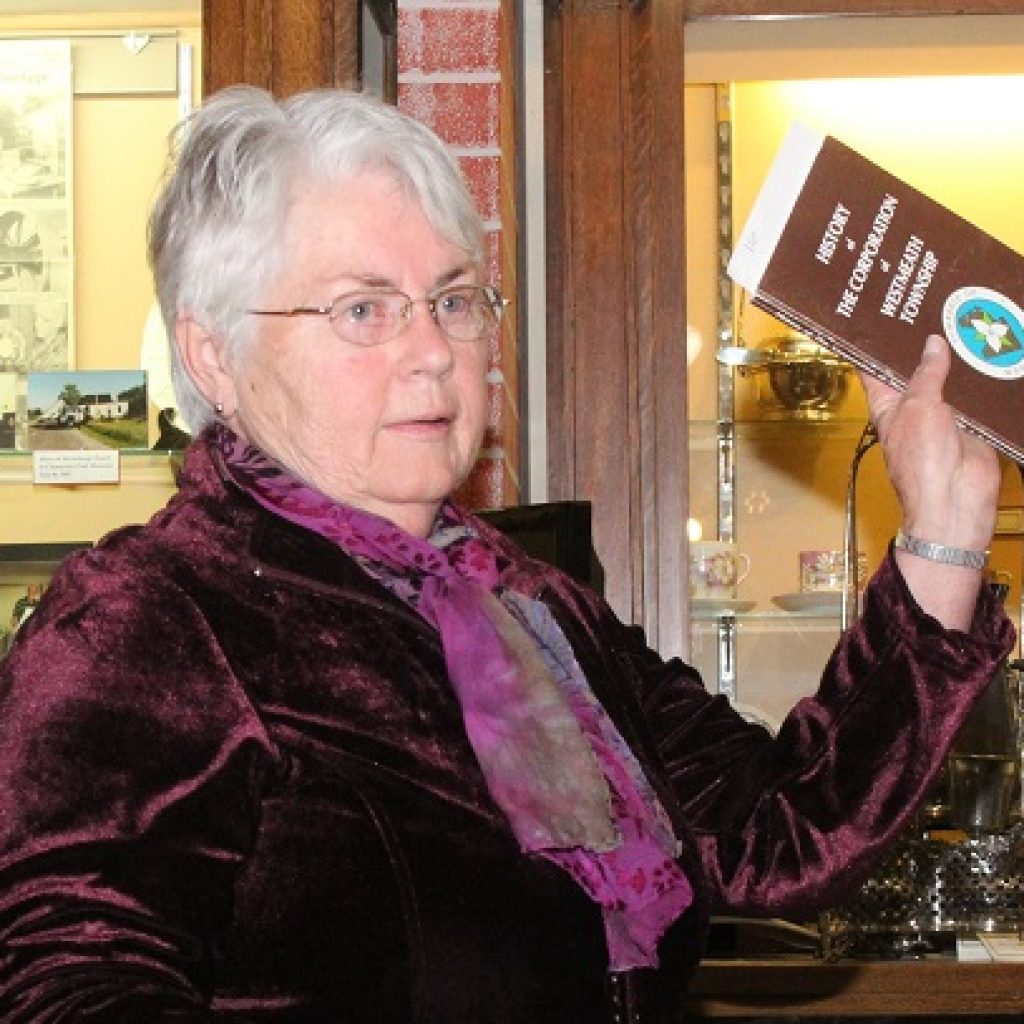
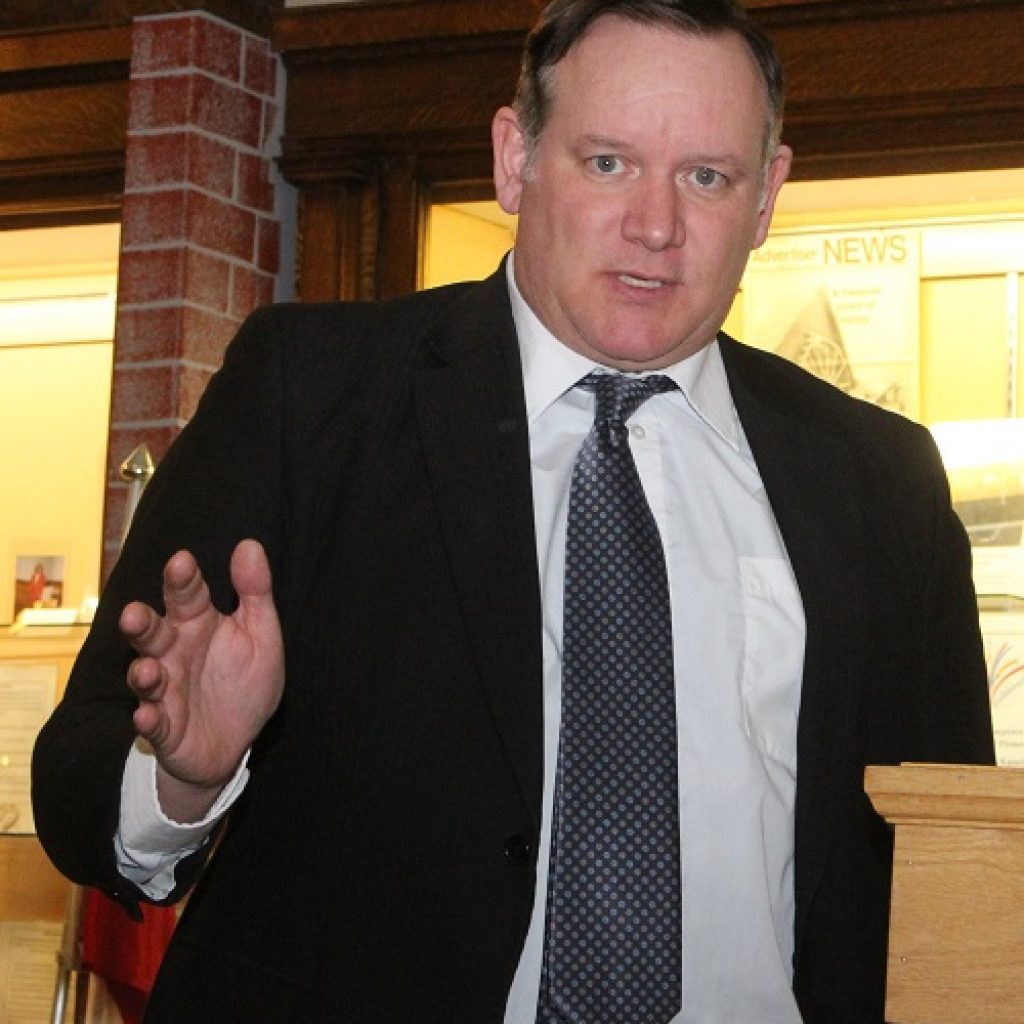

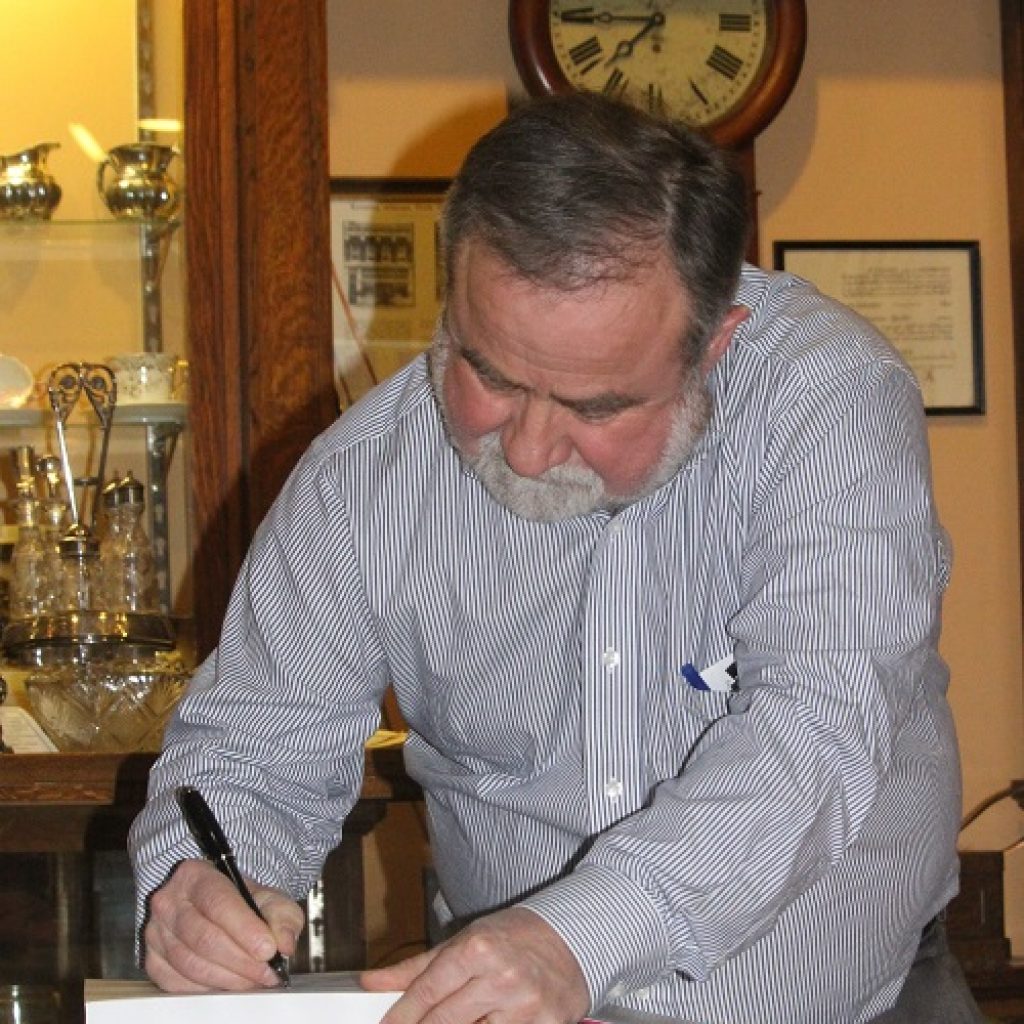
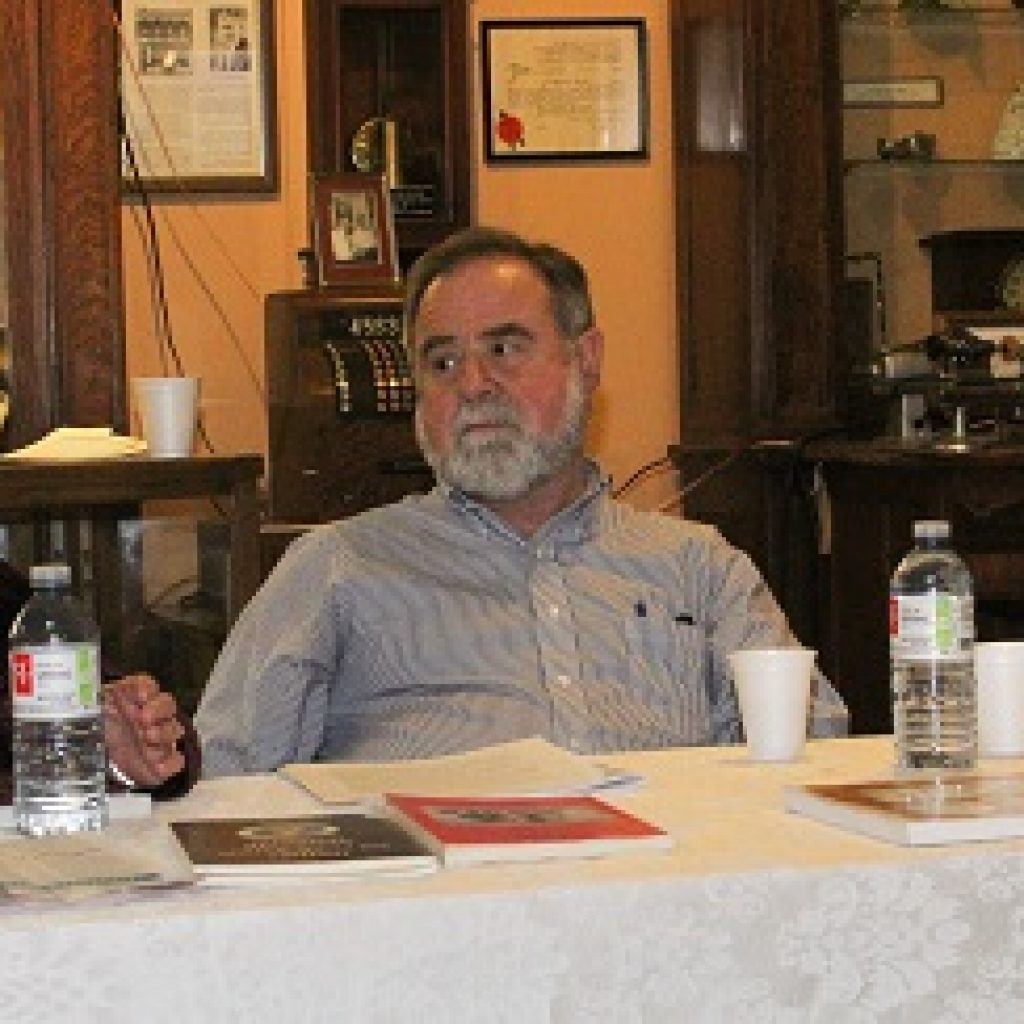


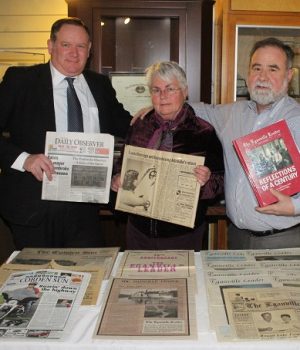




![Kenopic/Smith Auction [Paid Ad]](https://whitewaternews.ca/wp-content/uploads/2018/10/advertising-100x75.jpeg)

